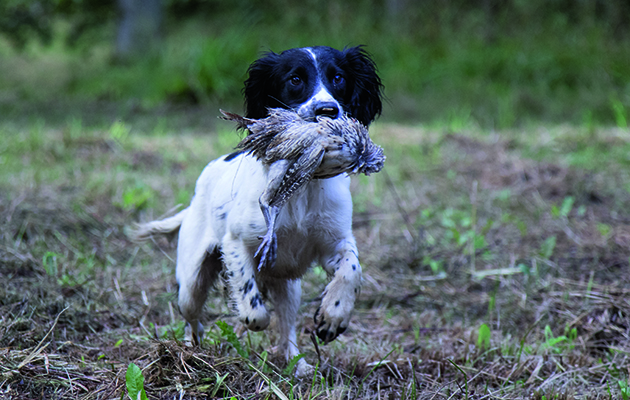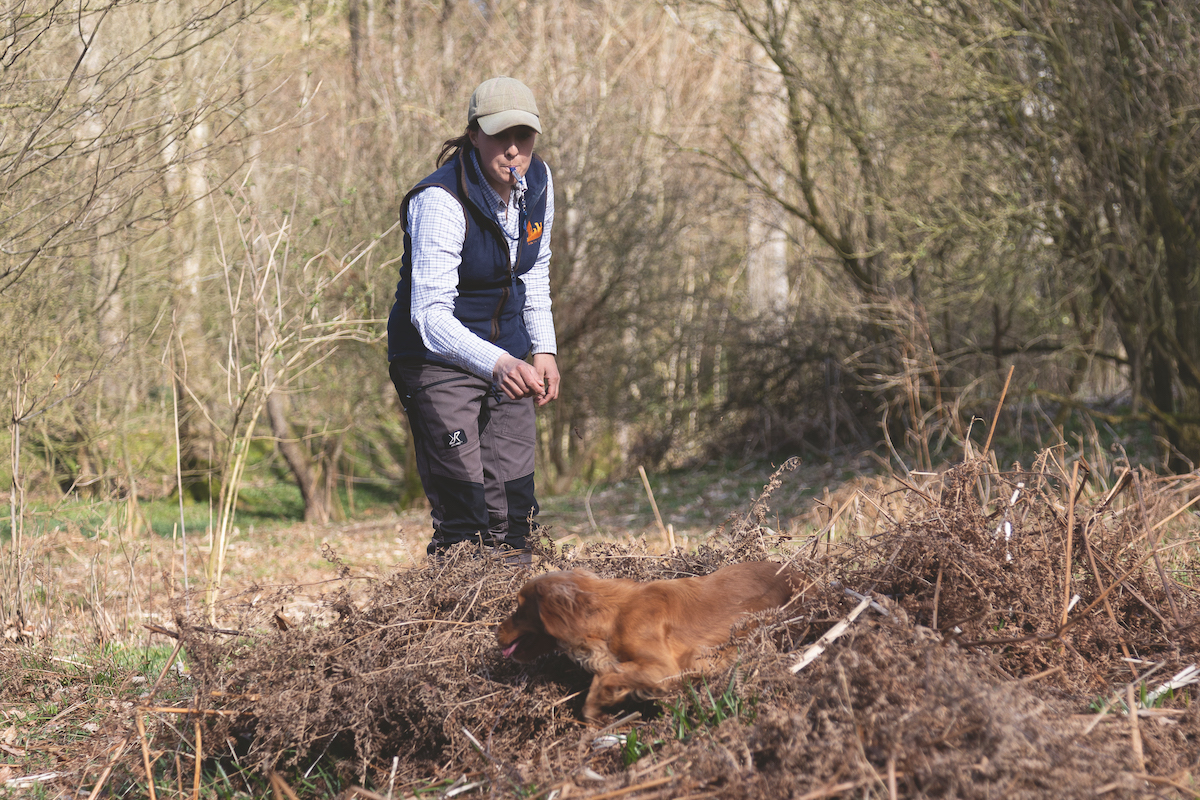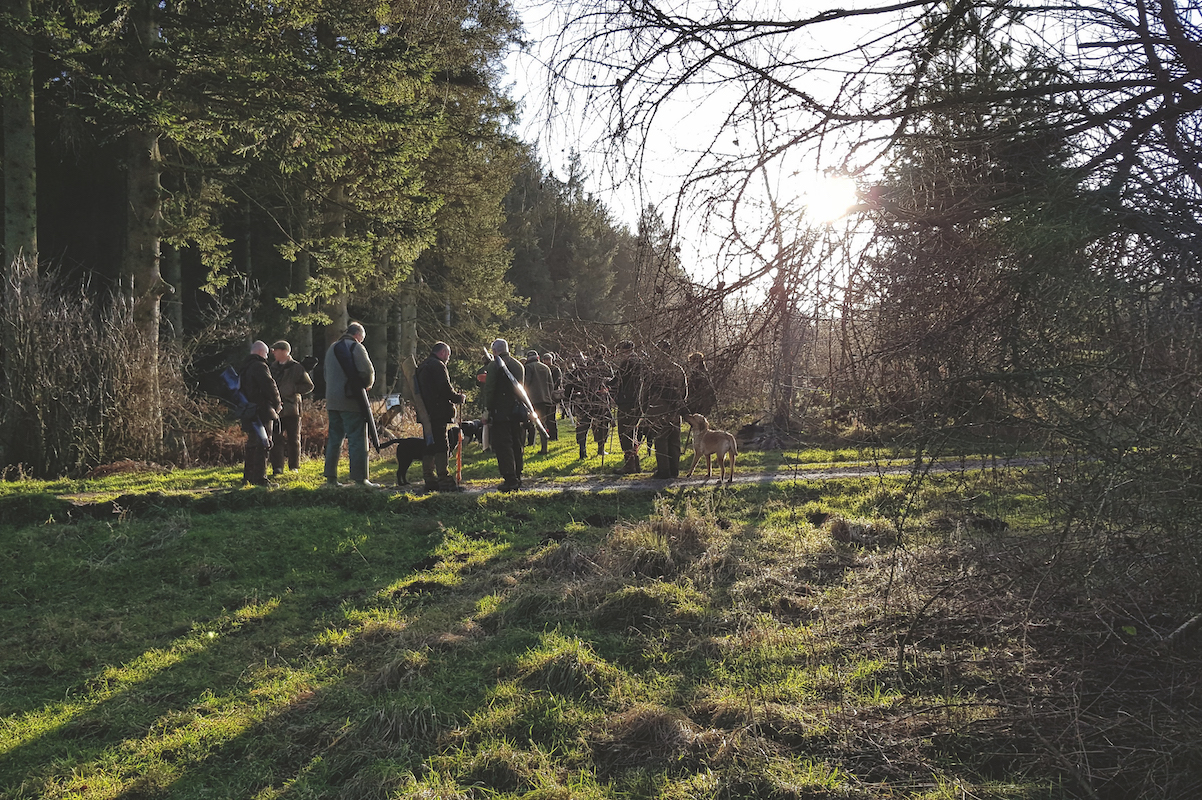How to train gundogs with shot and cold game
In the latest part of his gundog training series Neil Varney suggests bringing in the sound of shot and cold game in ways adapted to your dog’s traits

After a couple of goes a dog will realise that it is better to carry back a bird by the body, as Logan shows here
As a gundog trainer with several dogs to progress, I have to look at each individual and work out a suitable training programme for every one and this can vary due to the dog’s personality and its level of maturity.
Logan and Dolly, the two English springer spaniels, are now just over 12 months old and my plan for them is to reach a stage in their training where I can take them out in the beating line on a small, informal day. This is likely to be at the back end of this shooting season in January.
As a result, they have been taking priority over Remy the Labrador puppy, who will not be seeing the shooting field until the following season.
In the early days, Dolly was by far the bolder puppy, but since having her season she lacks a little in confidence, whereas Logan has come on in leaps and bounds and is making excellent progress. They are hunting like demons, so now would make a sensible time for me to introduce a degree of steadiness, the sound of shot and cold game.
There are two trains of thought regarding a spaniel’s early months of development. Some people like to instil a degree of discipline from the beginning, such as “sit”, “stay” and so on, and focus on getting the dogs to retrieve correctly, letting the dogs’ hunting develop afterwards.
The other side of the coin is that the young dog is conditioned to hunt after tennis balls or dummies and control is put in at a later stage. Factor in your ability as a trainer, where you are able to train, and the nature and breeding of your young gundog. Neither method is necessarily right nor wrong — you have to make up your own mind.

Neil uses a cartridge-fed starting pistol thus avoiding the far louder crack of the dummy launcher
Starting with shot
This is definitely one aspect of a young gundog’s training that should not be taken lightly and I like to introduce it only once the dog is a very keen and confident retriever. I have found it makes the whole process far easier without causing any stress to the dog. To start with, I give the young dog a few straightforward retrieves. I will even wind them up a bit and at this stage I am not concerned if they run in, as I want them to get excited about getting out to pick the dummy.

Neil makes sure he fires the shot away from the dog
I use a cartridge-fed starting pistol. Don’t use a dummy launcher as the crack from it is significantly louder than that from a starting pistol. Throw out the dummy and just as the dog goes to pick it up fire the shot away from the dog.
I have found that because the dog is so focused on the retrieve they do not even acknowledge the bang of the pistol. I would normally repeat this a couple of times and call it a day. Over a period of time, you can decrease the distance that you throw out the dummy, so that the bang becomes louder to the dog. I know handlers that have taken their young pups to a clayshooting ground, but this isn’t a good idea. Most clay grounds have sound barriers around the outside and the shot sound echoes around the area, which can be very distressing for a dog that is hearing shot for the first time.

Dolly is so focused on the retrieve that she doesn’t notice the bang of the pistol
Introducing cold game
Being a part-time keeper and given the recent arrival of my poults, I have had the chance to try out Logan with some feathered retrieves because there are always a few fatalities in the first few days. If you can get hold of any dead poults, they make excellent first feathered retrieves for young dogs. Being small and light, they are far better than woodpigeon, which tend to shed feathers easily and can put a young dog off picking feathered game.

Dead poults make better first feathered retrieves than woodpigeon, which shed easily
As with all aspects of the dogs’ training, I do not put any pressure on them and try to make the exercises a game. I am not worried at this stage that Logan runs in to the retrieve.

Go back to fur dummies if the bird is damaged
I start with throwing out a dummy and as soon as he brings it back I immediately throw out the dead poult.

Use pheasant wings to build dogs’ confidence
As expected, he goes straight out and picks it up, though as with many young dogs, he carries it back by the neck. However, this merely stems from a lack of confidence and after a couple of goes he realises that it is better to carry it by the body.

Logan carries the bird back by the neck
During these early stages I like to check the condition of the bird once the dog has brought it back. I just want to make sure he hasn’t got overexcited and crushed the ribs. The correct way to check is to hold the bird over its back and feel the rib cage.

The correct way to check a bird’s condition is to hold it over its back and feel the rib cage for any damage
If the dog has damaged the bird, you may well feel that one side has been “caved in”. At this stage don’t be too despondent if the dog has caused slight damage to the bird. This may be through a bit of excitement of picking-up something new. I would advise that you don’t use any more game and go back to fur dummies. You could attach some pheasant wings to a dummy, which will help to build up the dog’s confidence.








